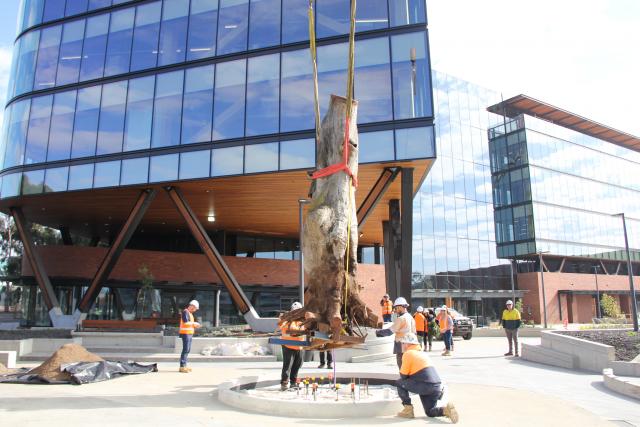A culturally significant, but deteriorating, scarred tree has been conserved and moved to Wurriki Nyal to stand at the heart of Greater Geelong’s new Civic Precinct.
The tree was moved at the request of Wadawurrung Traditional Owners and is believed to predate European settlement of the Geelong region.
The restored scarred tree is the centrepiece of Wurriki Nyal’s outdoor community space, beside a traditional gathering or yarning circle named ‘Gayoonpanyoon Goopma’, which means ‘gather’ in Wadawurrung language.
Scarred trees are named for the long scars in their trunks left behind from when First Nations people have traditionally removed bark for a variety of purposes, including canoe making.
The relocation and preservation of the scarred tree has formed part of the City’s ongoing co-design partnership with Wadawurrung Traditional Owners in the design of Wurriki Nyal.
Following detailed consultation, the City engaged a specialist arborist to assess the tree, which was deemed at high risk of further degradation and collapse in its previous environment.
In collaboration with Wadawurrung Traditional Owners, its new home in Wurriki Nyal was agreed.
Careful removal, preservation and relocation works were undertaken over a six-month period.
“Wadawurrung value the City of Greater Geelong’s support to see the scarred tree preserved for future generations,” Wadawurrung Traditional Owners Aboriginal Corporation CEO Paul Davis said.
“This is an old soul that Wadawurrung Elders wanted to save while still standing. The current process of conserving scarred trees is taking place across many Traditional lands.
“This old Biyal (red gum) will now stand in the Wurriki Nyal Civic Precinct – a place where it is protected and can be safely viewed by all.”







